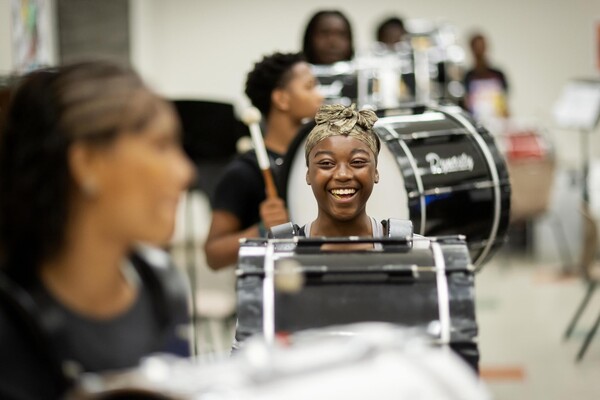
Image: Aditya Irawan/NurPhoto via AP Images
The National Science Foundation (NSF) has awarded the University of Pennsylvania a $24 Million, five-year grant to establish a Science and Technology Center (STC) focused on engineering mechanobiology, or the way cells exert and are influenced by the physical forces in their environment. This award is part of an overall $94 million from NSF to support four new STCs. In addition to these latest awards NSF supports eight other STCs.
The Center for Engineering Mechanobiology will foster collaborations between Penn researchers and colleagues at the University of Washington in St. Louis (WUSTL), the University of Texas at Austin, the New Jersey Institute of Technology (NJIT), Alabama State University, Bryn Mawr College, and Boston University (BU).
The Penn contingent draws from the Perelman School of Medicine and the School of Engineering and Applied Science. It will be led by co-directors Yale E. Goldman, MD, PhD, a professor of Physiology and of Biochemistry and Molecular Biophysics in Penn Medicine and Mechanical Engineering and Applied Mechanics in Penn Engineering, and Vivek Shenoy, PhD, a professor with appointments in Engineering’s departments of Materials Science and Engineering, Mechanical Engineering and Applied Mechanics, and Bioengineering.
Other members of the Center’s leadership include Rebecca Wells, MD, an associate professor of Medicine, Robert L. Mauck, PhD, the Mary Black Ralston Professor for Education and Research in Orthopaedic Surgery, E. Michael Ostap, PhD, a professor of Physiology and director of the Pennsylvania Muscle Institute, all from Penn Medicine;William Hunter, PhD, a professor of Bioengineering at NJIT; Guy Genin, PhD, a professor of Bioengineering and Ram Dixit, PhD, an associate professor of Biology, both of WUSTL; and Christopher Chen, MD, PhD, a professor of Biomedical Engineering at BU.
Mechanical forces play a role in a wide range of biological phenomena in plants and animals, so insights generated by the Center could provide deeper understanding of embryonic development and stem-cell differentiation, cancer metastasis, the dynamic factors that influence gene expression, and many other clinically and agriculturally relevant topics.
These insights will also inform innovations like organs-on-chips that provide ideal testing platforms for human disease and “cyborg” leaf devices that can monitor plants’ natural mechanisms for responding to moisture and other environmental factors and report those conditions to farmers.
“We are at a crucial juncture in the biological sciences,” Goldman said. “We’re now just starting to understand how the force-sensing and mechanical outputs of cells pervade development, maintenance of health, and pathology of plants and animals, but we’re still doing this kind of research in isolated groups with limited interactions and separate goals.”
“By bringing together primary experts in plant and animal mechanobiology into an integrated framework of research and training, the Center will catalyze a new vision for biological, biomedical, and agricultural science,” Shenoy said.
The Center will also have faculty members dedicated to translating findings from basic research into applications. This knowledge transfer arm will be led by Mauck and Dan Huh, PhD, the Wilf Family Term Assistant Professor of Bioengineering in Penn Engineering.
To strengthen the pipeline of diverse young scientists entering the field, the Center will actively recruit from the minority-serving institutions in the partnership, providing summer programs, bootcamps, and Research Experiences for Undergraduates. Hunter will direct the Center’s diversity outreach, and Wells will direct the Center’s educational program.
Research will be conducted in three groups, each dedicated to a different scale at which mechanobiological forces are at play: Individual cells’ molecular components and microenvironment, how cells use mechanical cues to signal to one another, and how these interactions come together to form larger assemblies and structures, which could be the inspiration for new biomaterials. Communication and coordination between the partner institutions will be led by Ostap.
The Center is supported by National Science Foundation Award CMMI-1548571.
Karen Kreeger , Evan Lerner

Image: Aditya Irawan/NurPhoto via AP Images

nocred

Image: Michael Levine

A West Philadelphia High School student practices the drum as part of a July summer program in partnership with the Netter Center for Community Partnerships and nonprofit Musicopia.
nocred